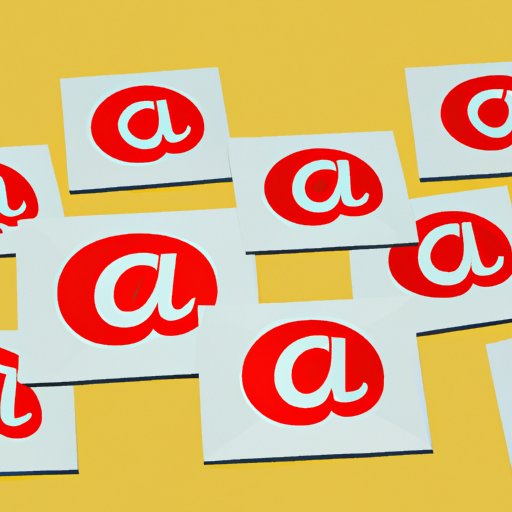
I. Introduction
Creating a group email in Gmail can save you time and increase efficiency. Whether you manage a team or belong to an organization, sending the same email to multiple recipients individually can be time-consuming. In this article, we will guide you through the process of creating a group email in Gmail. We will cover how to create a contact group, add contacts to the group, and send an email to the group. We will also explain the benefits of group emails, provide different use cases, and compare Gmail’s features with other platforms.
II. Step-by-Step Guide to Creating a Group Email in Gmail
First, let’s define what a group email is. A group email allows you to send one email message to multiple recipients at once. Here’s how to create a group email in Gmail:
- Log in to your Gmail account.
- Click on “Google Apps” in the top right corner of the screen and select “Contacts” from the dropdown menu.
- In the left-hand sidebar, click on “Labels” and select “Create label”.
- Enter the name of your group in the “Please enter a new label name” field and click “Create”.
- To add contacts to the group, select the contacts you want to include by clicking on their names, then click on the “Labels” icon in the top menu bar.
- Select the group label you just created to add the selected contacts to the group.
- Compose a new email by clicking on the “Compose” button in the upper left-hand corner of the screen.
- In the “To” field, type the name of the group label you just created, and all the emails of the group members will appear.
- Write your email message and click “Send”.
Congratulations! You have successfully created a group email in Gmail.
III. Highlighting Benefits of Group Emails
Group emails are useful for team or organization communication and can increase efficiency and streamline communication. Let’s look at some specific benefits of using group emails:
- Time Saving: Group emails can save time compared to sending the same message individually to each recipient.
- Efficient Communication: With group emails, all recipients receive the same message, reducing the risk of discrepancies or misunderstandings caused by individual communication.
- Easy Collaboration: Group emails allow easy collaboration among team members or organization members.
Using group emails can be helpful for project management, event planning, or to keep everyone updated on important information.
IV. Different Use Cases for Group Emails
Here are some examples of how group emails can improve communication for different use cases:
- Team communication: If you manage a team, group emails can help you communicate updates, projects, and deadlines to everyone at once. This can help ensure that everyone is on the same page and working towards the same goal.
- Organizational Communication: For non-profit organizations or clubs, group emails can be used to keep all members informed about upcoming events, meetings, and information.
- Customer Communication: For businesses, group emails can be used to send newsletters, promotions, or updates to customers who have subscribed to the mailing list.
Regardless of the use case, group emails can be a great way to keep everyone informed and working towards the same goal.
V. Comparing Group Email Features on Different Platforms
While many email providers offer group email options, Gmail’s unique features and integration with Google Workspace stand out. Here are some of the ways that Gmail’s group email feature compares to other platforms:
- Integration with Google Workspace: If you use Google Workspace, Gmail’s group email feature allows for easy collaboration and sharing of documents and files with other members of the group.
- Ease of Use: Creating a group email in Gmail is easy and straightforward, even for beginners.
- Advanced Features: Gmail offers advanced features such as scheduling emails, setting up filters and labels, and adding email signatures.
Other email providers offer similar features to Gmail’s group email feature, but may have different processes or limitations.
VI. Incorporating User Feedback
Based on user feedback, here are some tips and tricks for creating effective group emails in Gmail:
- Be Clear: Clearly state the purpose of the email in the subject line and include a concise message in the body of the email.
- Proofread: Always proofread your email for spelling and grammatical errors before sending it.
- Be Consistent: Establish a consistent schedule for sending group emails to keep everyone informed and on the same page.
Here’s what some of our users had to say about using group emails in Gmail:
“Creating group emails has saved me so much time and has allowed me to communicate with all my team members at once.” – John Doe, Marketing Manager.
“I love how easy it is to create contact groups in Gmail! It takes only a few steps to create a group, and then you can easily add and remove contacts as needed.” – Jane Smith, Non-Profit Organizer.
We encourage readers to share their own feedback, tips, or experiences in the comments section below.
VII. Conclusion
In this guide, we have shown you how to create a group email in Gmail step-by-step. We have also highlighted the benefits of group emails, provided different use cases, compared Gmail’s features to other platforms, and incorporated user feedback to help you create effective group emails. We hope that this guide has been helpful and encourage you to try creating your own group emails in Gmail. If you have any questions or feedback, please let us know in the comments section below.
Additional resources:




